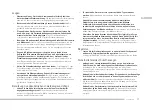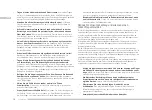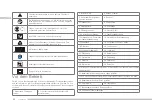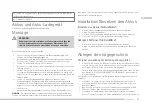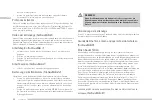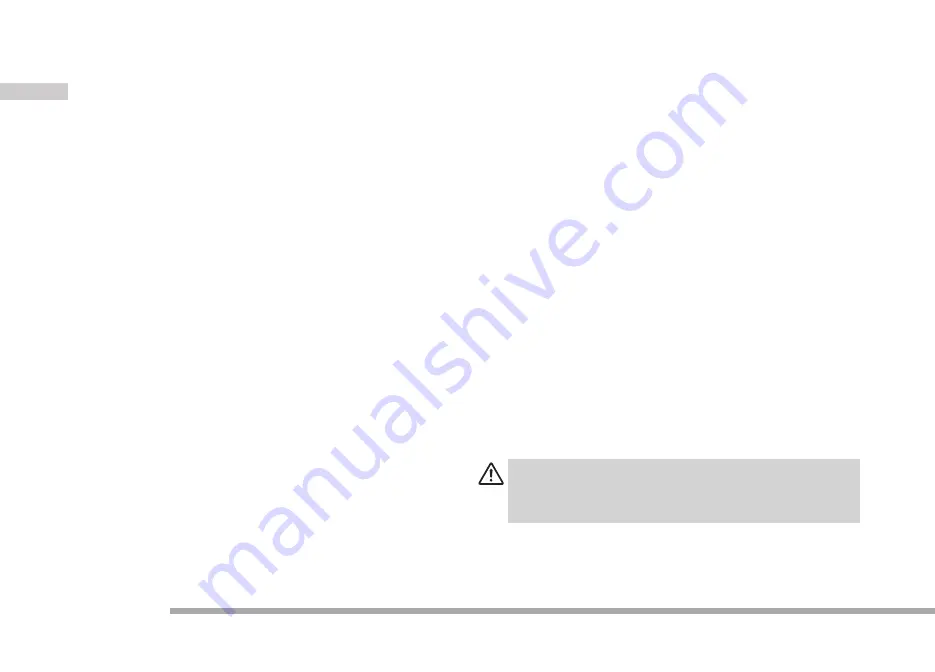
10
cramer.eu
EN
•
Position the chain so there is a loop at the back of the bar.
•
Hold the chain in position on the bar and place the loop around the
sprocket.
•
Fit the bar flush against the mounting surface so that the bar studs are in
the long slot of the bar. Ensure that the chain is over the sprocket.
•
Replace the chain cover.
•
Remove all slack from the chain by turning the chain adjustment screw
clockwise until the chain seats snugly against the bar with the drive links in
the bar groove.
•
Lift the tip of the guide bar up to check for sag.
•
Release the tip of the guide bar and turn the chain adjustment screw 1/2
turn clockwise. Repeat this process until sag does not exist.
•
Hold the tip of the guide bar up and tighten the chain cover lock nuts by
turning them with the wrench. The chain is correctly tensioned when there
is no sag on the underside of th e guide bar, the chain is snug, but it can be
turned by hand without binding.
Adding chain & bar lubricant
•
Unscrew and remove the cap from the oil tank.
•
Pour the oil into the oil tank and monitor the oil level gauge. Ensure that no
dirt enters the oil tank while filling the oil in.
•
Put the oil cap back on and tighten it up.
•
One full oil tank will enable you to use the saw for 20- 40 min.
Adjust the amount of the lubricant
(see
Figure 16
)
You can adjust the amonut of the lubricant according to the cutting requirement.
1
Find the adjustment screw at the bottom of the chain saw.
2
Turn the screw with the wrench clockwise to increase the amount of the
lubricant.
3
Turn the screw with the wrench counterclockwise to decrease the amount
of the lubricant.
Transporting the chain saw
Before transporting the chain saw, always remove the battery pack from the chain
saw and slide the chain cover over the bar and chain. If several cuts are to be
performed with the chain saw, the saw must be switch off between cuts.
Guide bar cover
The chain cover must be clipped onto the chain and bar as soon as the sawing
work has been completed and whenever the machine has to be transported.
Sharpening the saw chain
(see
Figure 17-22
)
When the chain penetrates into wood with difficulty, it needs sharpening as
follows:
•
Put the chain under tension.
•
Fasten the bar in a vice so that the chain can slide.
•
Fasten the file to the file holder and place it on cutter at 35° angle.
•
File with forward strokes only until all the worn out parts of the cutting
edge are taken away.
•
Count the number of strokes given to the cutter as a reference and file
away with the same number of strokes on all other cutters.
•
If the depth gauge protrudes from the template after sharpening a few
times, reset its level. Use a flat file. Finally, round off the depth gauge.
NOTE:
It is recommended to have the deep or important sharpening carried out
by a service agent who is equipped with electric sharpener.
Guide bar maintenance
•
When you have finished working, clean out the groove and the oil passages
with a scraping hook.
•
Periodically trim the sides of rails using a flat file. If not done in the long
run, the feather edges might break away and damage the bar.
•
If one rail is higher than the other one, it is necessary to make it even with
a flat file then smooth it with a file or fine grain abrasive paper.
WARNING!
To avoid serious personal injury, always remove the battery pack
from the tool when cleaning or performing any maintenance.
General maintenance
Before each use, inspect the entire product for damaged, missing, or loose parts
such as screws, nuts, bolts, caps, etc. Tighten securely all fasteners and caps

















